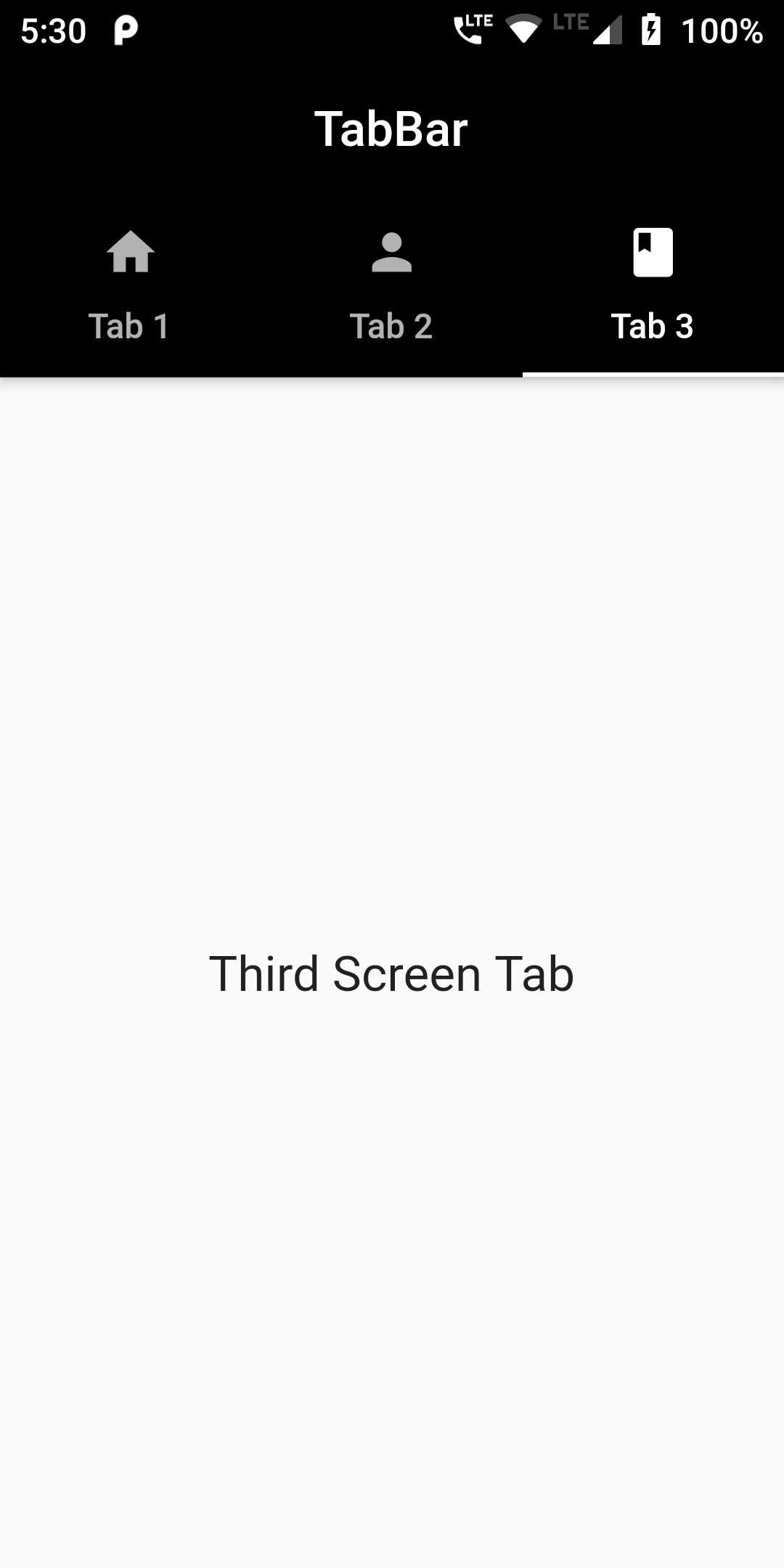import 'package:flutter/material.dart';
void main() {
runApp(MyApp());
}
class MyApp extends StatelessWidget {
@override
Widget build(BuildContext context) {
return MaterialApp(
debugShowCheckedModeBanner: false,
home: DefaultTabController(
length: 3,
child: Scaffold(
appBar: AppBar(
bottom: TabBar(
tabs: [
new Tab(icon: new Icon(Icons.home), text: 'Tab 1',),
new Tab(icon: new Icon(Icons.person), text: 'Tab 2',),
new Tab(icon: new Icon(Icons.book), text: 'Tab 3',),
],
),
centerTitle: true,
title: Text('TabBar'),
backgroundColor: Colors.black,
),
body: TabBarView(
children: [
FirstScreen(),
SecondScreen(),
ThirdScreen()
],
),
),
),
);
}
}
class FirstScreen extends StatelessWidget {
@override
Widget build(BuildContext context) {
return MaterialApp(
debugShowCheckedModeBanner: false,
home: Scaffold(
body: Center(
child:
Text('First Screen Tab',
style: TextStyle(fontSize: 20),)
)
)
);
}
}
class SecondScreen extends StatelessWidget {
@override
Widget build(BuildContext context) {
return MaterialApp(
debugShowCheckedModeBanner: false,
home: Scaffold(
body: Center(
child:
Text('Second Screen Tab',
style: TextStyle(fontSize: 20),)
)
)
);
}
}
class ThirdScreen extends StatelessWidget {
@override
Widget build(BuildContext context) {
return MaterialApp(
debugShowCheckedModeBanner: false,
home: Scaffold(
body: Center(
child:
Text('Third Screen Tab',
style: TextStyle(fontSize: 20),)
)
)
);
}
}
